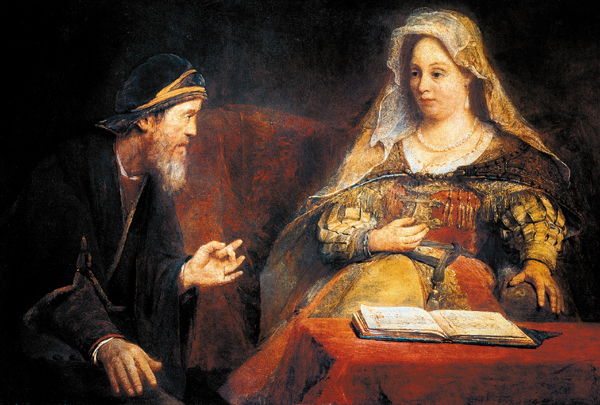Image Details

Erich Lessing/Art Resource, NY
Mordecai persuades his cousin Esther to talk her husband, the Persian king Ahasuerus (r. 486–465 B.C.E.), out of carrying out a destruction edict against the Jewish people, in this 18th-century painting by the Dutch painter Aert de Gelder. Mordecai and Esther were exiled Israelites living in the Persian capital Susa, and both have theophoric names referring to Babylonian gods: Mordecai is derived from the god Marduk, and Esther possibly derives from the goddess Ishtar.
Mordecai’s and Esther’s names reflect the adoption of Babylonian theophoric names among Jews in the Exile. But starting around 480 B.C.E., approximately 60 years after the Persians conquered Babylon and permitted the Jews to return home, and 35 years after the Temple was rebuilt (515 B.C.E.), the percentage of Hebrew and Yahwistic names among Jews living in Babylonia increased dramatically, expressing a reassertion of Jewish ethnic and religious identity.
